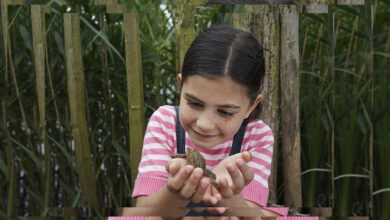Join forces with other parents to work “for a better internet” worldwide in February for Safer Internet Day.
Launched in 2004 by the EU SafeBorders project, is celebrated today in 150 countries. The day is meant to address various concerns parents and individuals, face including cyberbullying, social networking, and other emerging online issues.
“The digital world is not always rainbows and unicorns. Growing up online also means dealing with new kinds of risks to prevent this we need to strive for a safer and better internet where everyone is empowered to use technology responsibly, respectfully, critically, and creatively,” states the Safer Internet Day 2020 video.
Much of the campaign is channeled through social media. Last year’s Safer Internet Day, generated a potential 2 billion impressions on Twitter.

In Canada
Here in Canada, the day is marked with the help of the Canadian Centre for Child Protection. The Centre is encouraging the conversation among Canadian parents through their website protectkidsonline.ca.
The Canadian Centre for Child Protection (Canadian Centre) focuses on helping families have meaningful conversations with their children about internet safety. The online world is a dangerous one – according to the Canadian Centre, approximately one in seven children aged 10-17 receive unwanted sexual solicitations online.
Another 26 per cent of children send personal information to strangers. Then there are the dangers of things like cyberbullying, sextortion, online luring, and online challenges.
Canadian Centre wants to make it easier for families to have the very necessary discussion on online safety, and they are providing the tools to do so.
Useful Tools
One very useful tool to do just that is Zoe and Molly an interactive website where children aged 8 to 10 can explore what it means to be safe while playing online. It also helps them learn about the risks of sharing personal information and photos online.
“If kids have a chance to practice applying safe responses to situations that may present risk they are more likely to respond safely if they encounter a similar situation online,” says Noni Classen, director of education for the Canadian centre.
“Kids need to know if they come across something online that feels weird or causes them to worry to tell a safe adult without fear of getting in trouble.”
This website is a fun way for children to build their confidence with internet safety, and at the same time practice the skills they are building. The site also acts as a launch for parents and teachers to have meaningful conversations around internet safety.
Tips to ensure your child is safe online
Young Children (7 and under)

For younger children playing online, one of the larger risks they face is being diverted from the site or app they are using to one that has inappropriate content.
-
-
- For example, when playing games like Minecraft, Roblox, or Fortnite, they can be diverted to inappropriate content through the chat function. Same goes for searching for information on browsers like Google or looking at video sharing sites like YouTube – children can be exposed to inappropriate content.
-
-
-
- One of the best things you can do is talk to your children, and teach them to come to you if they encounter anything online that makes them feel uncomfortable. They should also learn to come to you before they decide to go online, be it to search for information, watch videos, or play a game.
-
-
-
- It is also important for you to know about and understand what they are interested in. Read up on the games they want to play. Make sure they are age appropriate? You can help them do their searches, and preview any videos for them at this age. It also helps to use the parental filters on the internet browser to help field out any of the violent or sexually explicit content to which your children may be exposed. Also, turning off the chat function in online games can help, too.
-
Children aged eight to 12 years
At this age, the online risks for children expand, including issues like cyberbullying, online luring, and exposure to violent or sexually explicit materials. One of the best ways of preventing these things is to have good communication with your child. However, here are a few more tips and resources to help manage risks and give your children the skills they need.
-
-
- Cyberbullying is abusive, targeted harassment that happens online. It can be even worse than in-person bullying because it can happen anytime online, meaning the child has no break from it. Children should learn that anything they post online, from pictures to comments, should be considered public, and can be misused. They should also learn to protect their passwords from others.
-
-
-
- Should your child does receive a mean message, teach them the following for dealing with it:
-
-
-
- Don’t answer the message, no matter how tempting. It will only make it worse.
- Don’t delete the message. Keep it and show it to a safe adult.
- Talk to a safe adult about it, someone who can support them and help them deal with the situation.
- Block the person who made the comment from their social media or games.
- Report it!
- If you receive a mean message about someone else, don’t share it with others. Talk to an adult about it.
- If you see someone else being cyberbullied, don’t join in – stay out of it, and tell a safe adult.
-
-
-
- Children this age should be taught to question anything and everything they see online. Anyone can post anything online, whether they know anything about the topic or not. You should also teach your child to talk to you about anything they encounter that makes them feel uncomfortable, or that seems odd.
-
-
-
- Teach your child to use great caution when using the video and chat functions in games (or otherwise). Make sure your child understands that people can take pictures through video chat, and then misuse them.
-
-
-
- Online luring is when someone communicates with children online for sexual purposes – which, obviously, is illegal. This is possible through online chat/video functions in online games or apps that have those functions. It is very important to teach your child to talk to an adult if this happens. Children should also be taught that if someone makes them feel uncomfortable, they should stop talking to that person immediately and talk to an adult. Teach your child not to share their pictures online, and that they should always get your permission before sharing a photo or any information online.
-
Teens

-
-
- On top of the risks mentioned above, teens also need to be aware of issues like self/peer exploitation – also known as sexting. This is where youth create, send and share sexual images or videos either online or through electronic devices.
-
-
-
- Sextortion is when a youth is coerced into sending either videos or photos of a sexual nature through a camera-enabled device. The youth is then blackmailed by being threatened with the distribution of the sexual images if the youth doesn’t either send money or more images.
-
-
-
- There are a number of things you can do to protect your teen, and help them build the skills they need to navigate the online world safely. A lot of it comes down to good communication:
-
-
-
- Discuss the risks of sharing intimate images or personal information online.
- Discuss what it means to have healthy and unhealthy relationships.
- Discuss the importance of establishing and respecting personal boundaries.
- Make sure they understand that it is illegal to share intimate images of someone who does not consent.
-
-
If something has happened
If something has happened, from cyberbullying to sextortion, it is important to report it to the appropriate authorities. To report concerning behaviour, you can talk to your local police, or to cybertip.ca They even have a phone number 1-866-658-9022.
Also, there are organizations that help you remove an intimate image online.
Again, one of the best thing you can do to help your teen is to have good communication with them. It may be awkward at times, but you will never regret doing it.
Visit this site as it brings you to a list of resources for talking to your teen. They include information on what the risk is, how your teen could be at risk, and gives you strategies for having a discussion with your teen.
They cover topics such as sextortion, cyberbullying, online luring, healthy relationships, smartphone safety, and more. They are all in PDF format, and simple to print off at home – or just look at using your smartphone or tablet.
Tips courtesy of protectkidsonline.ca. For more information on this, visit their website.











